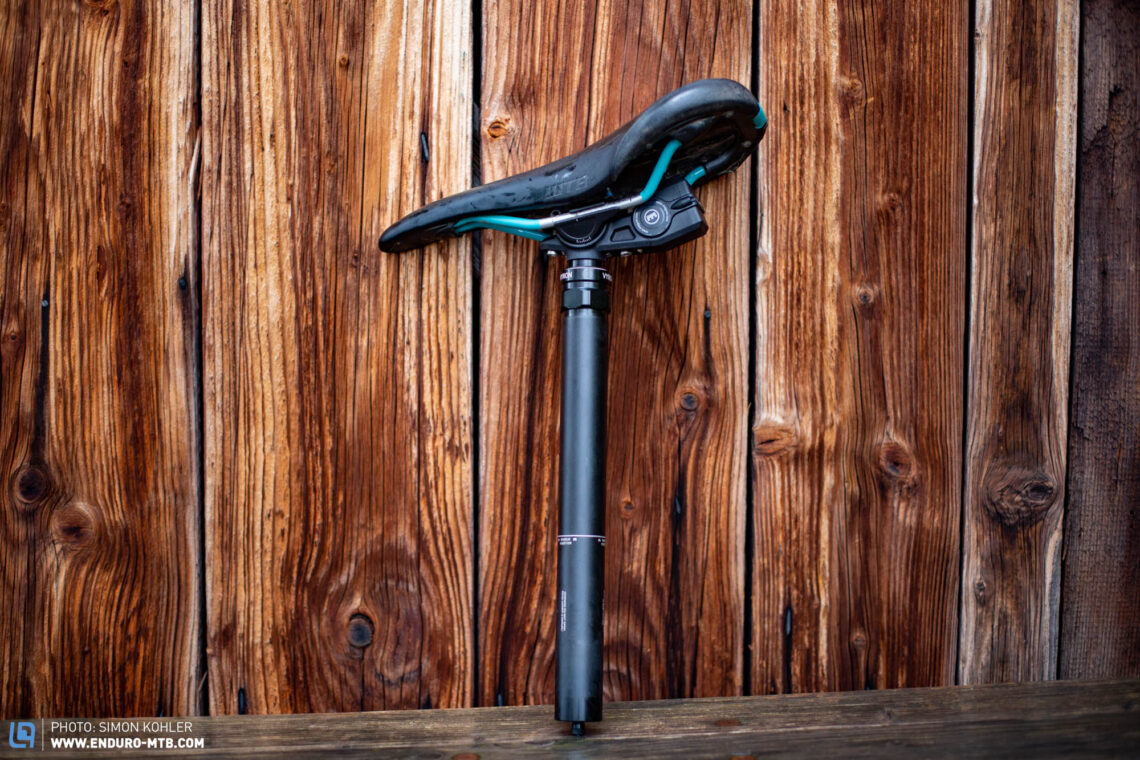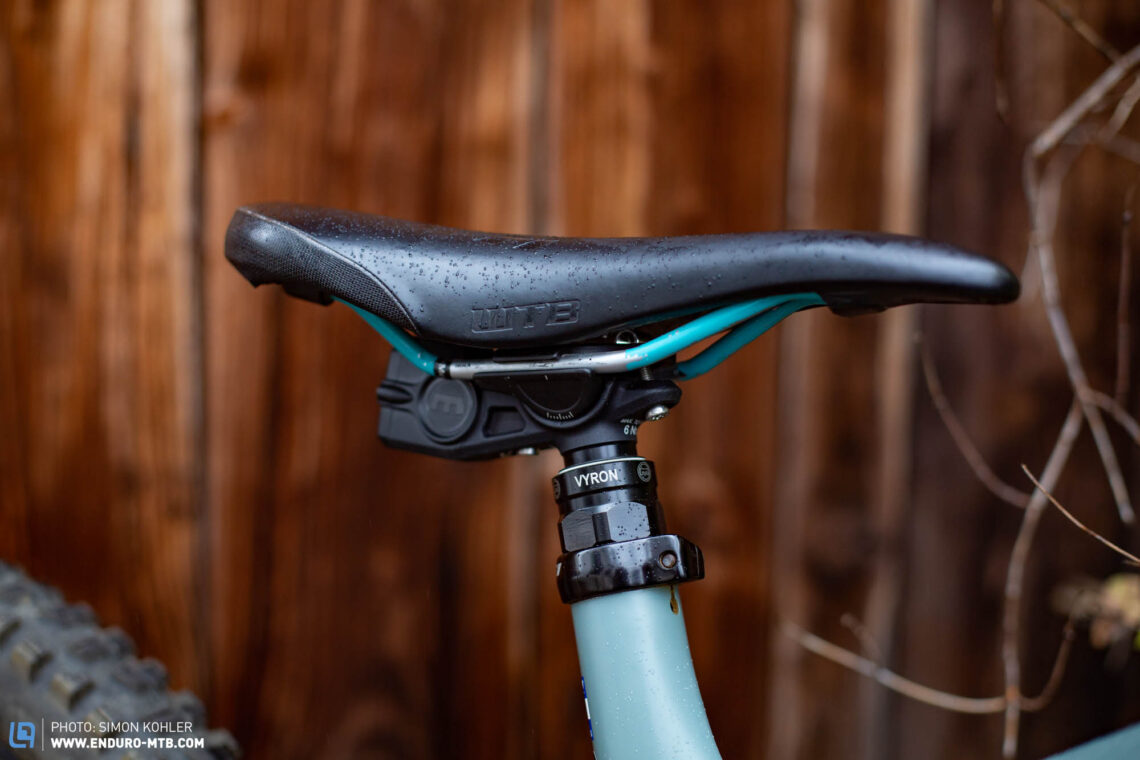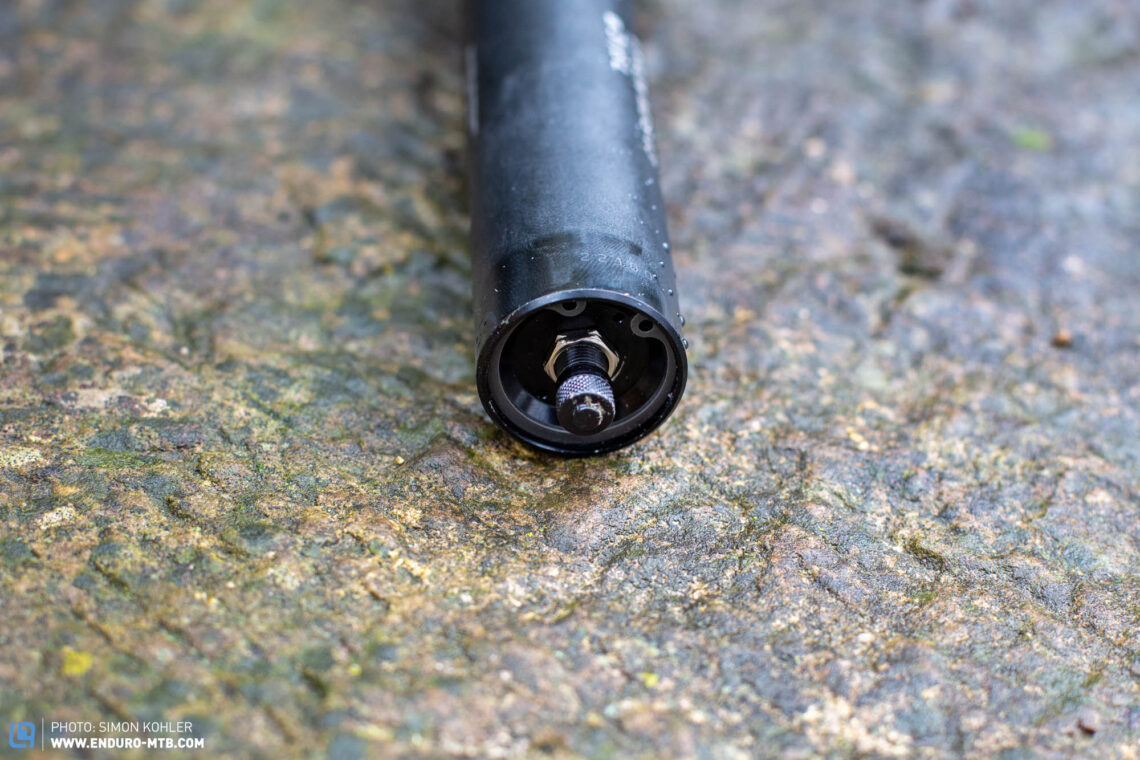MAGURA Vyron MDS-V3 dropper post in review – Can MAGURA’s latest wireless model deliver?
Dropper posts are standard on pretty much all mountain bikes these days, and MAGURA have set out to mix up the market of wireless options with their latest Vyron MDS-V3 model. We put it to the test to find out how it performs and if it can keep up with the wireless RockShox Reverb AXS, which currently sets the bar.

weight: 700 g dropper post + 42 g remote | insertion depth: 280 mm | travel: 175 mm | price: € 579.90 (incl. remote)
In 2016, brake specialists MAGURA were the first to bring a wireless dropper post to the market when they launched the Vyron. Despite being the pioneers of this segment, their dropper never gained a firm foothold in the market. Now they’ve introduced the Vyron MDS-V3, which stands for MAGURA Dropper Seatpost Version 3, and it’s available in 4 lengths: 100, 125, 150, and 175 mm. MAGURA achieve this by offering two different lengths on which the travel can be adjusted by 25 mm. Doing so is quick and easy, without the need to open the pressurised chamber. The dropper is available in diameters of 30.9 and 31.6 mm only, so if you’ve got a 34.9 mm internal diameter seat tube, you’re out of luck. The new Vyron can be yours for € 579.90, including the remote. The insertion depth of the 150/175 mm model is 280 mm. That’s about 15 mm more than the 170 mm travel Reverb AXS or the mechanical 180 mm travel OneUp V2. In terms of weight, the Vyron tips the scales at 700 g, just like the Reverb AXS.

Technical specs of the MAGURA Vyron MDS-3
The valve of the MAGURA Vyron MDS-V3 gets operated by a small motor beneath the saddle. In turn, the motor is powered by a standard CR2 battery, which MAGURA claim should last about one year or 9000 cycles. This allows them to construct the mechanism in such a way that it’s waterproof according to the IP67 standard. As such, the Vyron is certified to withstand being dunked 1 metre deep into water for 30 minutes. Needless to say, a little spray and mud shouldn’t phase it in the least There’s an indicator on the side of the seat post so that you don’t end up on the trail with an empty battery. The remote relies on a coin cell battery for its power source, which should last even longer than the battery in the seat post. Mounted underneath the handlebar, as with mechanical modals, the remote is simple and relatively compact. The finish makes a high-quality impression, and you can attach it using a separate clamp or any one of the various brake lever clamps from MAGURA and SRAM. In an effort to speed up the reaction time, the latest model relies on Bluetooth connectivity instead of ANT+ like its predecessor. The collar of the seat post and the seat clamp are significantly taller than on mechanical dropper posts, so you won’t be able to drop the saddle as far even with the seat post inserted all the way into the frame, limiting your freedom of movement slightly more. However, it’s more compact than the RockShox Reverb AXS, which is 5 mm taller.



The MAGURA Vyron MDS-V3 on the trail
Installing the MAGURA Vyron MDS-V3 is super easy. To pair the remote with the dropper, simply insert the included batteries then press the remote followed by the button on the post. Next, insert the dropper post into the seat tube, attach the saddle and mount the remote to the handlebar. And you’re done.

Before heading out on a ride, you must switch the dropper post on by pressing the small button underneath the saddle. It’s an added step, but by opting against an automatic function, you can be sure that the dropper post won’t turn itself on when it isn’t needed, such as when transporting the bike, which would drain the battery unnecessarily. The remote feels ergonomic and provides good haptics. Instead of feeling vague, it offers a well-defined resistance that doesn’t leave you guessing whether you’ve pushed the button or not. More so than the current AXS remotes. The speed at which the dropper extends is rather slow – significantly slower than the RockShox Reverb AXS and most manual dropper posts. The motor is slightly louder than that of the RockShox Reverb AXS and you can hear it opening the valve when you push the remote.

One of the Vyron’s shortcomings is that the reaction time of the valve is somewhat delayed despite the faster Bluetooth connection. As such, after you let go of the remote the valve doesn’t close immediately and lock the dropper post in place. For example, if you want to drop the saddle, you must stay seated for a moment after releasing the button. Otherwise, the dropper will extend slightly before the valve closes. This also makes adjusting the seat height to anywhere between the fully extended and fully dropped position a lot trickier as you must let go of the remote and hold your position at the desired height until the valve has closed. You can’t extend the saddle to the halfway mark while standing up and briefly pushing the remote. If you push the remote and let go, the saddle will extend all the way unless you stop it manually. Combined with the slow extension speed, you can’t adjust the saddle to the desired height with speed and precision while you’re on the go, making it less suitable for ambitious trail riders who demand that level of functionality. Touring riders who attach less importance to stepless adjustment in fractions of a second can find the new Vyron MDS-V3 a faithful companion. For ambitious riders, however, you can get a faster and more precise dropper for less money with most mechanical alternatives.

Our conclusion on the new MAGURA Vyron MDS-V3
It’s cool to see alternatives in the wireless dropper post market. The MAGURA Vyron MDS-V3 makes a high-quality impression, the remote is ergonomic, and it’s easy to install. Thanks to the use of a standard CR2 battery, it saves you from having to recharge on a regular basis, too. For ambitious rides on technical singletrails, the Vyron is not convincing due to the delayed response of the valve and the slow speed at which it extends and drops, leaving it behind the electric competition.
For more information, visit https://www.magura.com/
